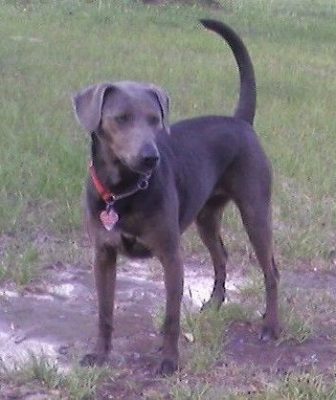
Like the Plott, the Blue Lacy takes its name from the Lacy family that created and nurtured it, the “blue” in the name coming from the blue gene that all Blue Lacys carry, and not because of the color of their coat. The breed, in fact, comes in a variety of colors.
Also like the Plott which was named the official state dog for where it originated (North Carolina), the Lacy is the only dog breed to have originated in the second largest state of the United States – Texas – and thus, was designated its state dog by the 79th Legislature in 2005.
The Lacy has its origins with Frank, George, Ewin, and Harry Lacy who arrived in Texas from Kentucky by covered wagon in the 1800’s. They settled near Marble Falls, Texas where they raised hogs and cattle, but without benefit of modern farm implements, the boys relied on dogs to help them herd and round up stock. Using Greyhound, scent hounds, English Shepherds and coyote, the brothers developed a breed that became a common fixture on ranches in the Southwest for a hundred years. Why? Because it was said that one Lacy could do the work of five cowboys, and that a herd of 300 cattle or hogs could be penned by one Lacy in about three hours.
A chap named Fred Gipson was reared in Mason County, adjacent to where the Lacys lived, and several sources have suggested that the presence of Lacys in the Hill Country strongly influenced him when he wrote his novel. “Old Yeller.”
The Lacy is such an instinctive breed, seemingly being able to sense what’s needed before anyone else does, that affectionados call it the perfect dog. It is the most common breed used by United States Trappers.
To date, the only single breed Blue Lacy registry with closed stud books is also the largest, and has the oldest pedigree data base and foundation stock for the breed, and that’s the Lacy Game Dog Registry. To our knowledge, The American Blue Lacy Association (ABLA) has applied to the AKC’s FSS program as the “American Blue Lacy.
Thumbnail image of a Blue Lacy by Rainbowbrooke via Wikicommons under Public Domain, https://commons.wikimedia.org/w/index.php?curid=5129140

One thought on “Texas’ State Dog”